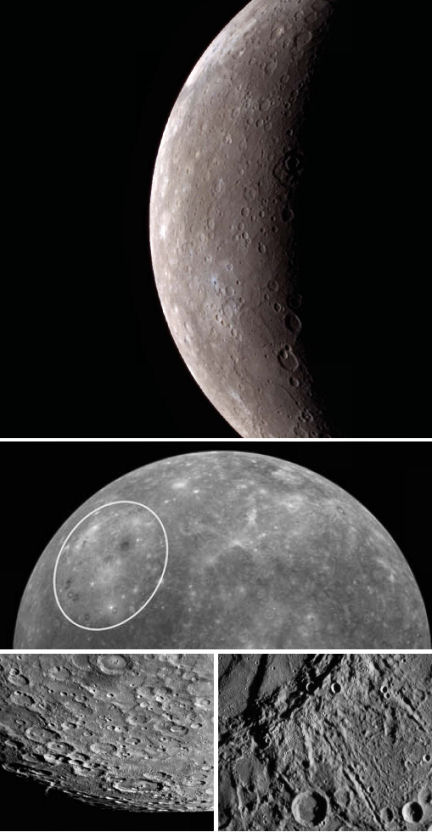Mercury, As Never Seen Before: MESSENGER visits innermost planet
Mercury’s image problem is fading. On Jan. 14, NASA’s MESSENGER spacecraft flew within 200 kilometers of the solar system’s smallest—and oft-ignored—planet. The craft viewed one crater-pocked hemisphere, half of which had never before been seen close-up. When Mariner 10, the only other craft to visit Mercury, examined the surface 33 years ago, sunlight illuminated a different portion of the planet.

“Even for the side of Mercury already viewed by Mariner 10, we are seeing the surface with fresh eyes,” says MESSENGER principal investigator Sean Solomon of the Carnegie Institution of Washington (D.C.). “The different lighting conditions, superior image quality, and broader color are showing us new features and providing new information on compositional differences.”
Recorded with 11 color filters, the images show that the giant Caloris basin, the largest crater on Mercury and one of the biggest in the entire solar system, has a diameter of about 1,500 km. That’s 200 km wider than estimates from Mariner 10, which had glimpsed only the basin’s eastern edge. Some craters within Caloris have dark rims that may contain material with a different composition from that in the crater floors, Solomon says.
Like a dowager’s wrinkles, a system of faults scores the planet and may be a sign that Mercury contracted as it cooled over billions of years, he adds.
Images taken near Mercury’s terminator, where day turns into night, provide “a jaw-dropping perspective” of the detailed topography, notes Solomon.
MESSENGER also recorded spectra of Mercury’s surface and thin atmosphere, or exosphere. A preliminary analysis confirms sodium in the exosphere, which was known from Earth-based observations.
Color images from the flyby highlight youthful craters no more than a few hundred million years old. Such craters have a relatively bluish tinge because they haven’t suffered long-term bombardment by micrometeoroids-grain-size rubble that vaporizes rock. Some iron-containing rocks resolidify afterward and become coated with material that reflects more red light.
By combining color images with spectra, scientists can determine which surface features originate from the planet’s thin crust and which emerged from the mantle beneath, says Mark Robinson of Arizona State University in Tempe.
Other measurements show that Mercury’s magnetic field has about the same strength as it did when Mariner 10 visited, but that the magnetosphere—the region around the planet dominated by the field—has shrunk, reports Ralph McNutt of the Johns Hopkins Applied Physics Laboratory in Laurel, Md. The energy of the charged particles in the magnetosphere also differs from that of 33 years ago, which could be a sign that the planet is highly sensitive to small changes in the sun’s activity, he adds.
Shooting laser pulses at the surface, MESSENGER also made the first high-resolution topographic measurements of Mercury.
The craft will next fly past Mercury in October, viewing the opposite side of the planet. After a third visit in September 2009, MESSENGER will settle into a year-long orbit about the planet beginning in March 2011.







